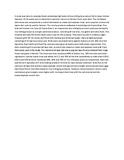Evaluation of high levels of rice milling byproducts in chicken layer diets: effects on layer performance, egg quality and economic returns.

View/
Date
2013Author
Maina, JG
Kamau, WN
Kabuage, LW
Language
enMetadata
Show full item recordAbstract
A study was done to evaluate feeds containing high levels of rice-milling by-products fed to layer chicken between 21-36 weeks and to determine economic returns to farmers from such diets. The rice based diets were also compared to a control diet based on maize and soybean meal, and a popular commercial layers diet used by poultry farmers. The rice by-products evaluated included Special Coarse Bran, Fine bran and broken rice. Special Coarse Bran is an inexpensive rice milling by-product produced during the rice milling process as a single combined product, consisting of rice bran, rice grains and some hulls. One hundred and sixty ISA brown layers were used for this purpose. They were housed in a battery cages measuring 45×45×18 inches and fitted with feeding and drinking troughs. Natural lighting system consisting of 12 day hours was used. Birds were vaccinated twice against Guboro on the 10th and 21st day while New Castle and Fowl Pox vaccines were given at twelve and a half weeks respectively. Five diets consisting of a commercial layer diet, a control diet based on maize and soybean meal and 3 test diets were used in the study. The commercial layer diet was a popular layer feed purchased from Unga Feeds Company in Nairobi. The three test diets contained 40% of broken rice, 20% fine bran and other ingredients. Special coarse bran was added at 0, 5, and 10% of the diet respectively to make diets SCB-0, SCB-5 and SCB-10 which contained 60%, 65% and 70% of rice milling by-products respectively. Each diet was fed to 4 replicates of 8 birds making a total of 32 birds on each dietary treatment. Birds fed on the commercial layer diet and the maize soybean control diet gained more weight and produced more eggs than those fed on test diets based on rice milling by-products. However, when economic returns were considered, gross margins were higher with rice based diets than with the commercial and the maize/soybean control diet.
URI
http://www.cabdirect.org/abstracts/20133246557.html?resultNumber=1&q=au%3A%22Kabuage%2C+L.+W.%22http://hdl.handle.net/11295/84231
Citation
Livestock Research for Rural Development 2013 Vol. 25 No. 7 pp. Article 119Publisher
Univeristy of Nairobi
